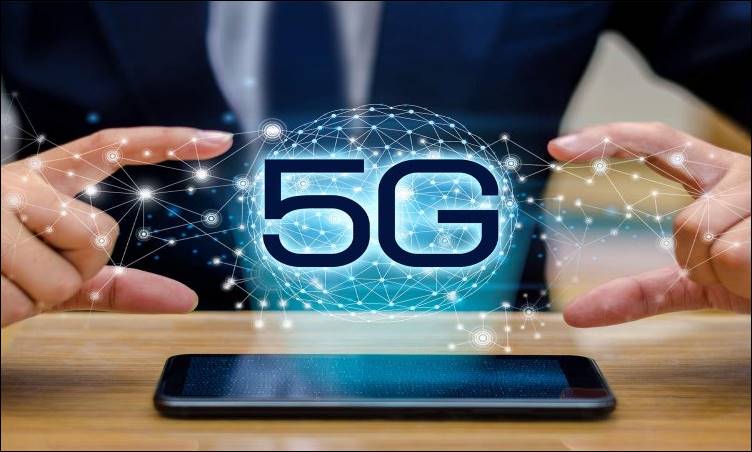Three years ago, the true prowess of 5G technology was spoken about with almost mythical undertones. Then came the ‘race to 5G’, with China, South Korea, and the United States competing against each other to reach the proverbial promised land. Today, 5G technology has become a reality, as many countries around the world have already rolled out 5G networks.
However, India, which remained buoyant about its chances to roll out with 5G networks in 2020, is still stuck in limbo. The coronavirus pandemic forced the Indian government to shelve its plans for the 5G spectrum auction last year, and telecom companies are still complaining about the exorbitant costs of the spectrum.
Meanwhile, the two telecom giants, Bharti Airtel and Reliance Jio have already announced their plans to spearhead the 5G revolution in the country, while Vodafone Idea and Bharat Sanchar Nigam Ltd. (BSNL) are also waiting to begin the 5G trials. The 5G spectrum auction is expected to take place within the next year, while considerable groundwork still needs to be laid, in terms of setting up proper infrastructure before we even think about experiencing the blazingly fast data speeds promised to us by experts.
What exactly is 5G?
Before we continue with our discussion and look at the realistic timelines of the 5G rollout, it is important to understand what 5G technology is all about. Most of us purchase a 5G mobile, without really understanding the nuances involved in 5G technology.
The fifth generation of wireless mobile technology (also known as ‘5G’) is built on the developments made during the previous generations and offers download speeds of around 1 gigabit per second, which is more than ten times the fastest internet speeds we experience today.
The first generation provided us with analog communication (voice), while 2G gave us the ability to send texts. 3G was all about mobile computing, while 4G enabled us to get faster data speeds and download thousands of applications on our smartphones. Thus, 5G technology, understandably has piqued everyone’s interest, with experts stating that the new generation of wireless mobile technology will change our lives forever.
What 5G means to smartphone users and industries
When it comes to individuals, 5G technology promises to deliver faster internet speeds, very low latency, and far better connectivity. It also comes with a bouquet of other advantages including better cloud services (dubbed ‘Cloudification’), but that might complicate our discussion.
In simple words, with 5G networks, you can download your favorite movie in just a couple of seconds, while the concept of buffering will be a forgotten issue. Low latency implies that you will be able to communicate with your smart devices instantly.
We ‘communicate’ with our devices, in the sense that we give them commands, and the devices execute them, but there is usually a small lag between the command and the execution. However, 5G technology will eliminate those minute lag times.
Additionally, 5G networks will also offer better connectivity, as you will be able to receive calls even when you’re located in a densely populated region.
For industries, 5G technology opens up a whole new world of possibilities. One can realistically imagine machines and human beings working in tandem, with 5G technology offering greater precision and control of robots.
Automobile companies can realistically think about developing and mass-producing completely autonomous vehicles, while 5G technology can also result in the realization of smart cities.
5G rollout – When can we expect to experience 5G networks in India?
Now that we’ve been sold the dream, the truth is that the deployment of 5G networks in India is still a long way away. While the first round of spectrum auction reportedly happened in March, it did not include the desired frequency band for 5G services. Another spectrum auction is expected to happen towards the end of the year, while Bharti Airtel and Reliance Jio have announced that their networks were 5G-ready.
This essentially pushes the timeline to early 2022 for the 5G network rollout. 5G services will likely be available to the general public sometime in 2022, as there is still a lack of proper infrastructure when it comes to 5G services. However, that hasn’t stopped smartphone companies from manufacturing pocket-friendly 5G-enabled smartphones.
According to industry insiders, Xiaomi, Realme, and OnePlus are ready to launch 5G-enabled smartphones in the budget segment. Today, the best smartphones under 15000 are not 5G-ready; however, it is likely that by the end of 2021, we will have a wide range of 5G-ready handsets in the budget segment, offered by multiple brands. There is also 6G by Verizon planned for release in 2029.
That said, you can now purchase a 5G-enabled handset without worrying about the costs involved by shopping at the Bajaj Finserv EMI Store. You can purchase any 5G smartphone that you fancy, and pay for it in no-cost EMIs by using the Bajaj Finserv EMI Network Card.
This post was last modified on March 18, 2024 11:24 AM

